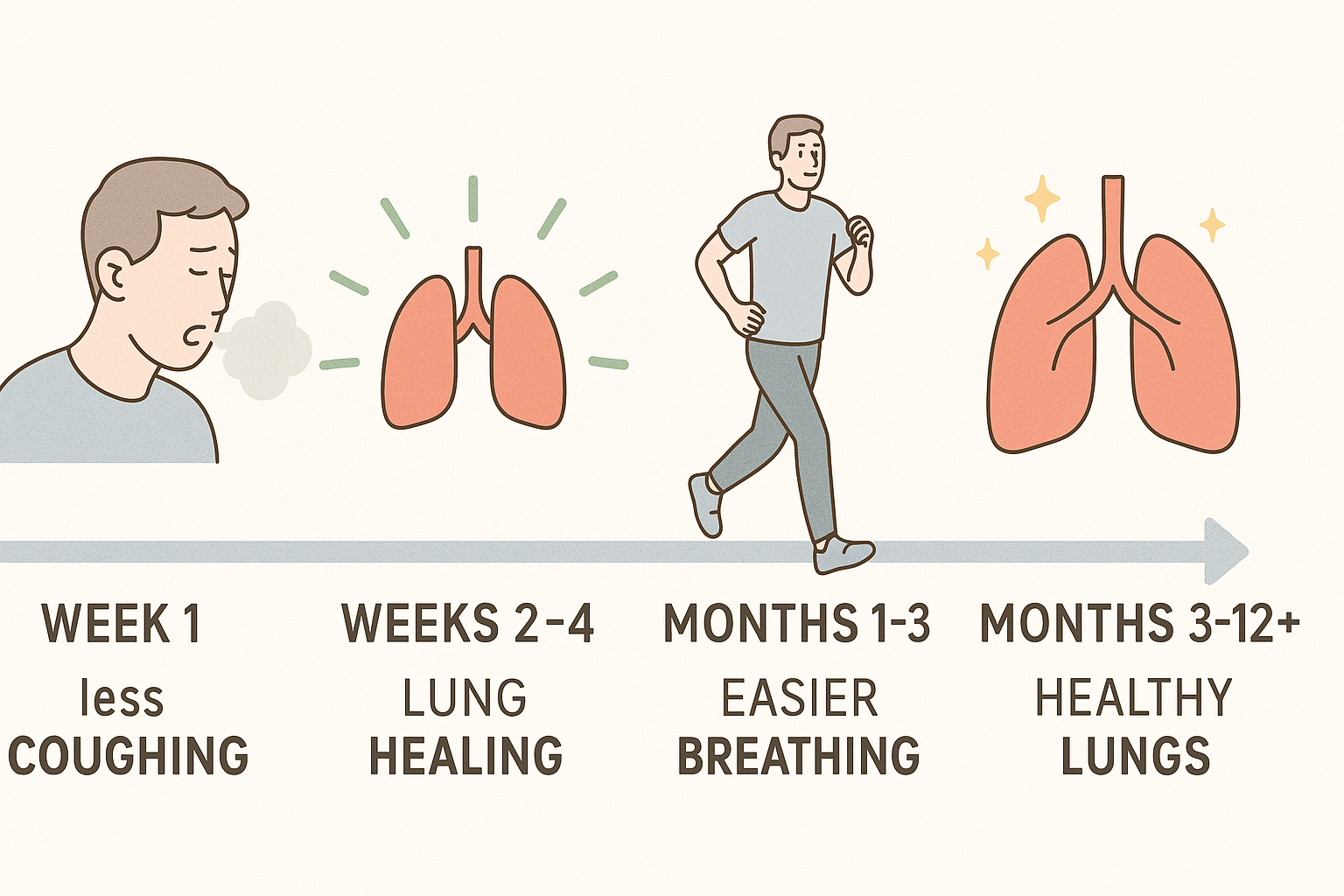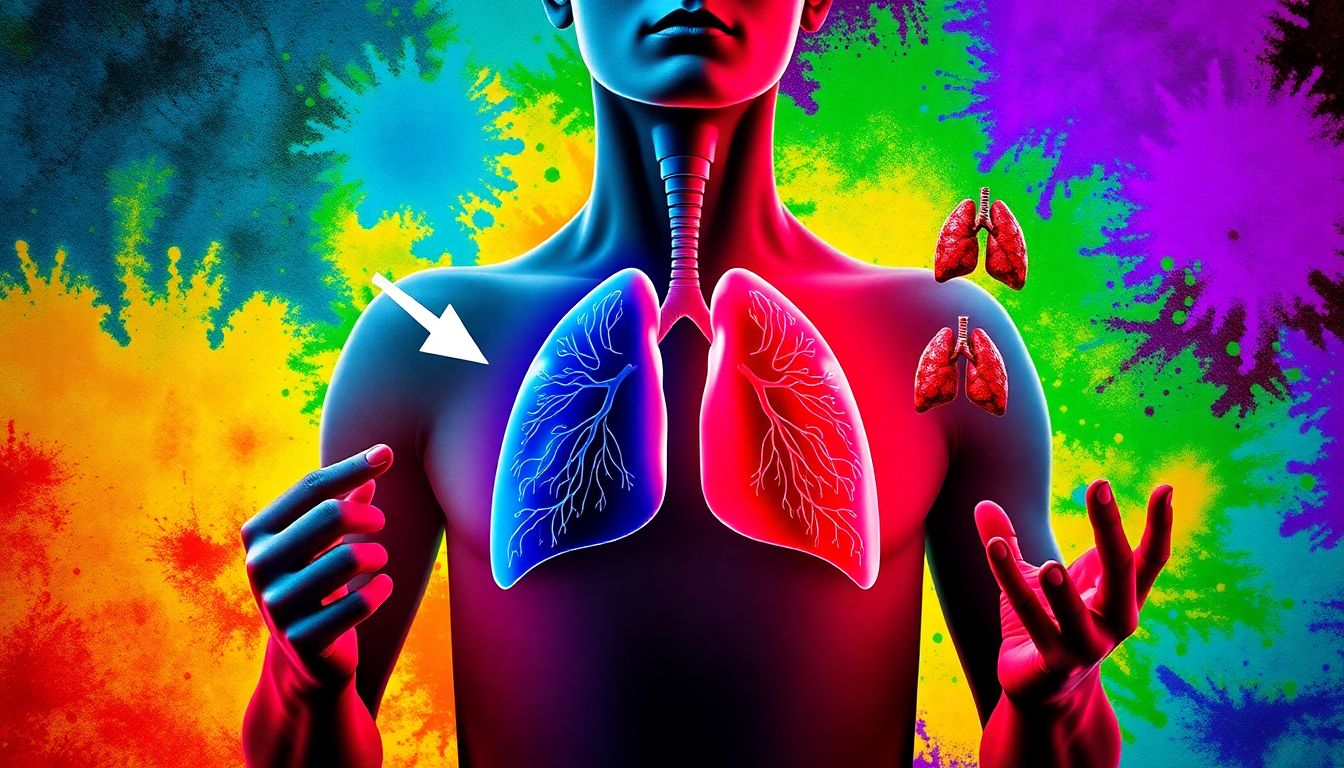That morning cough or persistent throat clearing produces more than just discomfort—it produces valuable clues about your respiratory health. While most people barely glance at their tissue, the color, consistency, and quantity of your mucus can reveal important information about what’s happening in your respiratory system.
This comprehensive guide includes our interactive mucus color chart and explains what each shade might indicate about your health, when to worry, and when to breathe easy.
Understanding Mucus: Your Respiratory System’s Security Guard
Before we dive into colors, let’s understand what mucus actually is and why it’s essential:
Mucus Has Important Jobs:
- Traps invaders: Bacteria, viruses, dust, and allergens
- Moisturizes airways: Prevents delicate lung tissue from drying out
- Contains antibodies: Your first line of immune defense
- Lubricates: Helps with swallowing and speaking
Normal vs. Concerning Mucus
- Normal production: 1-1.5 liters daily (you swallow most of it unconsciously)
- Healthy mucus: Clear or white, thin consistency
- Concerning changes: Persistent color changes, increased volume, or thick consistency lasting more than a week
Interactive Mucus Color Chart
Mucus Color Health Indicator Chart
Normal & Healthy
Typically indicates healthy respiratory function. May increase slightly with allergies or mild irritation.
Mild Congestion
Often seen with early colds, mild dehydration, or dairy consumption. Usually not concerning.
Fighting Infection
Your immune system is actively fighting viruses or bacteria. Usually indicates a cold or sinus infection.
Strong Immune Response
Neutrophils (infection-fighting cells) create green color. May indicate bacterial infection if persistent.
Blood Present
Small amounts may be from nasal irritation. Larger amounts require medical attention.
Old Blood or Irritants
Often seen in smokers or from environmental pollutants. Can indicate old bleeding.
Serious Concern
Can indicate fungal infection, heavy smoking, or environmental exposure. Requires immediate medical attention.
Detailed Analysis of Each Mucus Color
🟦 Clear Mucus: The Gold Standard
What it means: Your respiratory system is functioning normally.
Common causes:
- Healthy baseline production
- Mild allergies
- Early morning congestion
- Weather changes
- Mild irritant exposure
When to worry: Usually never—this is what we want to see!
Management:
- Maintain good hydration
- Use saline nasal spray if needed
- Continue normal activities
⚪ White Mucus: Mild Disruption
What it means: Slight inflammation or thickening of nasal secretions.
Common causes:
- Beginning of a cold
- Dairy consumption (for some people)
- Mild dehydration
- Sinus irritation
- Environmental allergies
Appearance: Cloudy, thicker than clear mucus
Management:
- Increase water intake
- Use humidifier
- Consider natural sinus relief methods
- Monitor for color changes
🟨 Yellow Mucus: Immune System Activation
What it means: Your body is actively fighting an infection.
The science: White blood cells called neutrophils rush to infection sites and contain greenish enzymes. In smaller concentrations, this appears yellow.
Common causes:
- Common cold
- Viral infections
- Sinus infections
- Bronchitis
When yellow becomes concerning:
- Lasts more than 10-14 days
- Accompanied by high fever
- Worsening symptoms after initial improvement
Management:
- Rest and hydration
- Steam inhalation
- Over-the-counter decongestants if needed
- Consider respiratory support supplements
🟩 Green Mucus: Peak Immune Response
What it means: Your immune system is in full battle mode against pathogens.
Important note: Green doesn’t automatically mean bacterial infection or need for antibiotics. Viral infections can also cause green mucus.
Common causes:
- Persistent colds
- Sinus infections (viral or bacterial)
- Bronchitis
- Pneumonia (in combination with other symptoms)
When green indicates possible bacterial infection:
- Symptoms lasting more than 10 days without improvement
- “Double worsening” (feeling better then much worse)
- High fever with colored mucus
- Severe headache or facial pain
Management:
- Medical evaluation if persistent
- Nasal irrigation with saline
- Expectorants to help clear mucus
- Warm compresses for sinus pressure
🔴 Red or Pink Mucus: Blood Presence
What it means: There’s bleeding somewhere in your respiratory tract.
Common causes of small amounts:
- Nosebleeds (even minor ones you didn’t notice)
- Dry nasal passages
- Vigorous nose blowing
- Nasal spray overuse
Concerning causes:
- Respiratory infections causing tissue damage
- Tuberculosis
- Pulmonary embolism
- Lung cancer (rare)
When to seek immediate care:
- More than a few streaks of blood
- Large amounts of blood
- Accompanied by chest pain or shortness of breath
- Unexplained weight loss with bloody mucus
🟫 Brown Mucus: Old Blood or Environmental Factors
What it means: Usually indicates old blood or environmental contaminants.
Common causes:
- Smoking (tobacco or marijuana)
- Air pollution exposure
- Old nosebleeds
- Certain occupational exposures (mining, construction)
Special consideration for smokers: Brown mucus is common and indicates the tar and toxins you’re inhaling. Consider this a warning sign to explore smoking cessation strategies.
When brown becomes concerning:
- New appearance without obvious cause
- Increasing amounts
- Accompanied by other respiratory symptoms
⚫ Black Mucus: Potentially Serious
What it means: Requires immediate medical attention.
Possible causes:
- Fungal infections (especially in immunocompromised individuals)
- Heavy smoking
- Coal worker’s pneumoconiosis (“black lung”)
- Environmental exposures (mold, heavy pollution)
- Certain medications
Always seek medical care for black mucus, as it can indicate serious fungal infections or significant environmental damage to lungs.
Consistency Matters Too: What Texture Tells You
Thin and Watery
- Usually indicates: Allergies, early colds, weather changes
- Action: Antihistamines for allergies, monitor for changes
Thick and Sticky
- Usually indicates: Dehydration, sinus infections, need for expectorants
- Action: Increase fluids, use humidifier, consider guaifenesin
Foamy or Frothy
- Can indicate: Pulmonary edema (fluid in lungs), especially if pink-tinged
- Action: Seek immediate medical attention if new or accompanied by shortness of breath
Rubbery or Clumpy
- Can indicate: Fungal balls, thick secretions, or post-nasal drip concretions
- Action: Medical evaluation recommended
The Timeline: How Long is Too Long?
Acute (3-10 days)
- Usually viral infections
- Self-limiting with supportive care
- Monitor for improvement
Subacute (10 days – 4 weeks)
- May need medical evaluation
- Could indicate bacterial superinfection
- Consider targeted supplement support
Chronic (4+ weeks)
- Requires medical investigation
- Could indicate chronic sinusitis, allergies, or other conditions
- May need imaging or specialist referral
Natural Approaches to Respiratory Health
Hydration Strategies
- Water: 8-10 glasses daily (more if feverish)
- Herbal teas: Peppermint, ginger, green tea
- Broth-based soups: Provide hydration and nutrients
- Limit: Caffeine and alcohol (dehydrating)
Steam and Humidity
- Steam inhalation: 10-15 minutes, 2-3 times daily
- Humidifiers: Maintain 40-50% indoor humidity
- Warm showers: The steam can help loosen congestion
Nutritional Support
- Vitamin C-rich foods: Citrus, bell peppers, broccoli
- Zinc sources: Pumpkin seeds, legumes, whole grains
- Anti-inflammatory foods: Turmeric, ginger, omega-3s
- Garlic and onions: Natural antimicrobial properties
Positioning and Movement
- Sleep elevated: Extra pillow to reduce post-nasal drip
- Gentle exercise: Can help mobilize secretions
- Chest percussion: Gentle tapping to loosen mucus
When to See a Doctor: Red Flags
Seek immediate medical attention for:
- Difficulty breathing or shortness of breath
- Chest pain
- High fever (over 102°F/39°C) that doesn’t respond to medication
- Confusion or disorientation
- Bluish lips or fingernails
Schedule a doctor’s appointment for:
- Colored mucus lasting more than 10-14 days
- Symptoms that worsen after initial improvement
- Recurrent episodes of colored mucus
- Associated facial pain or toothache
- Unexplained weight loss with respiratory symptoms
Mucus Management: Do’s and Don’ts
✅ Do:
- Stay well-hydrated
- Use saline nasal sprays
- Try steam inhalation
- Get adequate rest
- Use a humidifier
- Blow nose gently, one nostril at a time
❌ Don’t:
- Overuse decongestant nasal sprays (rebound congestion)
- Smoke or vape
- Ignore persistent color changes
- Use antibiotics without bacterial infection confirmation
- Suppress productive coughs unnecessarily
Special Populations: Unique Considerations
Children
- More frequent respiratory infections are normal
- Watch for dehydration signs
- Be cautious with over-the-counter medications
- Seek care for high fever or breathing difficulties
Older Adults
- Weaker immune responses may alter typical patterns
- More vulnerable to complications
- Multiple medications may affect mucus production
- Higher risk of pneumonia
People with Chronic Conditions
- Asthma: Mucus changes may precede attacks
- COPD: Color changes may indicate exacerbations
- Immune compromise: May not show typical infection responses
✅ FAQ
1. Does green mucus always mean I need antibiotics?
No, this is a common misconception. Green mucus can occur with viral infections as well as bacterial ones. Antibiotics are only effective against bacterial infections. The decision should be based on symptom duration, severity, and pattern rather than color alone.
2. How can I tell if my mucus is from my lungs or sinuses?
Mucus from lungs (phlegm) is typically coughed up from deep in the chest and may be frothy. Nasal mucus is usually thinner and may be accompanied by post-nasal drip. The color interpretation is similar for both.
3. Is it normal to have different colored mucus throughout the day?
Yes, mucus can change color as your body fights infection or responds to environmental factors. Morning mucus is often darker and thicker due to overnight accumulation. The overall trend is more important than individual observations.
4. Can diet affect mucus color?
Certain foods and drinks can temporarily affect mucus. Dairy may thicken mucus in some people, while strongly colored foods like beets or artificial colors might tint mucus slightly. However, these changes are usually temporary and distinct from infection-related colors.
5. When should I be concerned about clear mucus?
Clear mucus is typically normal. However, if you’re producing extremely large amounts of clear, watery mucus (especially if accompanied by sneezing and itchy eyes), it might indicate significant allergies that could benefit from treatment.
6. Can lung health supplements change mucus color?
Most supplements won’t dramatically change mucus color, though some expectorant herbs might help thin secretions, making them appear clearer. If you notice significant color changes after starting new supplements, consult your healthcare provider.
7. How accurate is the mucus color chart for diagnosing conditions?
The color chart provides helpful clues but isn’t diagnostic on its own. Healthcare providers consider mucus color along with other symptoms, physical examination findings, and sometimes laboratory tests to make accurate diagnoses.
8. Can weather changes affect mucus color?
Weather itself doesn’t typically change mucus color, but seasonal changes can trigger allergies or infections that do affect color. Dry air may thicken mucus, while humidity might thin it.
9. Is morning mucus different from daytime mucus?
Yes, mucus often accumulates overnight and may appear thicker and darker in the morning. This is usually normal unless accompanied by other concerning symptoms.
10. How long after starting treatment should mucus color improve?
With appropriate treatment for viral infections, mucus color should lighten within 3-5 days. Bacterial infections typically show improvement within 48-72 hours of starting antibiotics. If no improvement occurs within these timeframes, follow up with your healthcare provider.
“Persistent colored Mucus? Your body may be fighting trapped toxins. Learn how to flush them safely in The Ultimate Guide.“

Click on Image above to Learn More











